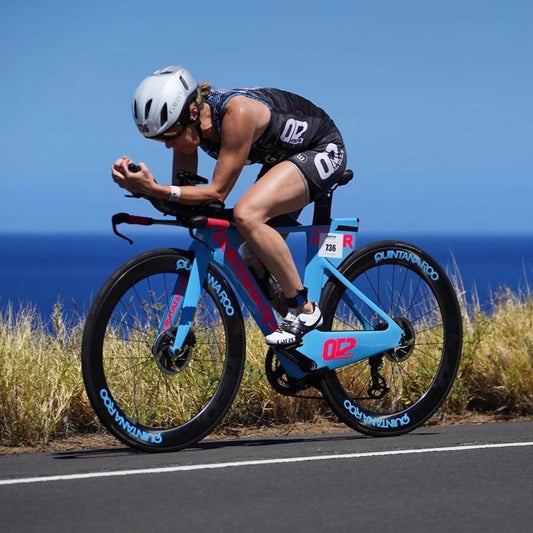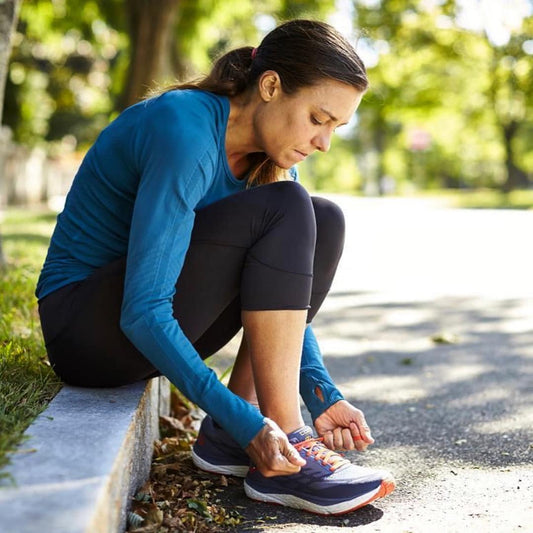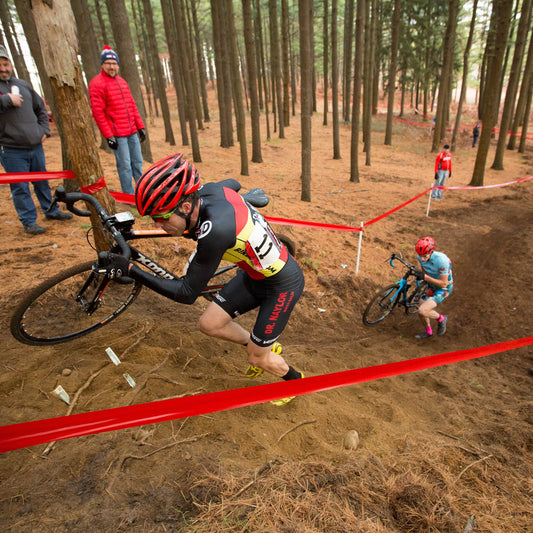2. Race Weekend dialed back: During this COVID Period, Race weekend in-person registration will be limited or non-existent. Expos will be toned down or not held. Packet pick up in some cases could be set by an age-group defined pick-up schedule. These are all to help alleviate the amount of folks in an area at a specific time. While it’s nice to have these options and activities for us athletes, remember that the point of the race weekend is to RACE. So for now, we may skip the expo in order to toe the start line.
3. Race morning / Pre-Race changes: Volunteers, Transitions Areas, Bathrooms…they are all going to be a bit different. Guidelines are asking athletes to mark themselves pre-race to limit volunteers, who will be masked. Race registration will be limited so that Transition Area will have more room for athletes’ belongings and allow for better practicing of physical distancing. Bathroom lines may take longer to go through given the need to clean them more often (which, if you’ve been in a bathroom pre-race before, this may be a long overdue and good change). Locally in Massachusetts, Tim Richmond, USAT Certified Race Director of Max Performance Triathlons (www.maxperformanceonline.com), has indicated they will explore staggering arrival times at races, to avoid an influx of athletes arriving at once.
4. All Things Swim: We have already seen the use of the rolling start increase significantly in the last 5 years. Expect that to be the new normal during this COVID period. For wave starts, you’ll likely see more frequent waves. All of this will help eliminate too many folks congregating near the start line at once, or too many folks around each other coming out of the water. When you exit the swim, you’re going to be getting that wetsuit off, as those volunteers will be relocated elsewhere with less contact with athletes. And if there is fluids offered post-swim before transition, it will be self-serve.
5. Bike…somewhat normal (!!!): Since most triathlons are non-draft legal, this part actually can go on SOMEWHAT SIMILAR, with some exceptions. When passing another rider, or on tight turns, guidelines are calling for ample distance between athletes. The bigger issue, for longer races, will be aid stations. Guidelines indicate that the number of stations may be reduced and be self-serve. During this time, it’s worthwhile to keep that extra bottle cage on the bike, OR utilize the special needs station at your longer events.
6. Run will have similar changes: Similar to the bike, it’s advised to continue staying 6 feet away from other competitors, keep an abundance of space at “pinch points”, and use your own nutrition when you are able. Aid Stations and Special needs areas will be self-serve as well.
7. Finish lines: For now, start practicing your 5-10 second finish celebration. Once you finish, you’ll likely be asked to exit ASAP so that the finish area does not get congested. You may also not see your post-race massage or ice bath be available, but there will be First Aid if you have any medical issues.
8. Post race festivities: That finish line celebration may be your only chance of enjoying your accomplishment for now (in person, that is). Awards Ceremony’s and world championship roll downs are likely to be modified. You’ll be offered a chance to pick up any award or have it shipped to you. The food post-race may be adjusted too – you’ll see lines to increase space between athletes and may even have a pre-packaged meal presented to you, so you can enjoy it back at your accommodations or on your drive home. A bummer (but necessary step, for now) for some local athletes in Massachusetts will be missing out on the post-race Beer Garden, as Tim from Max has indicated that, due to guidelines and to keep crowds reduced, these will have to stop for now.
During this pandemic, if an event is to actually happen, the amount of changes in the physical race are actually minimal. But race weekend logistics, athlete self-reliance, and the pre/post-race gatherings (or lack thereof) will be the keys to executing an event while COVID remains. It’s important for all athletes to understand that practicing measures recommended by the CDC and local/state governments both in and out of the race weekend will be crucial in attempting any return to sport. This is how race directors have to operate too, as Tim noted how decisions to race are dependent on government guidance as the phases of “opening” are presented.
The above is what you will likely see happen at your next race course during COVID-19. It’s a rapidly changing situation, however, so in the meantime, keep doing your part, and stay safe!





